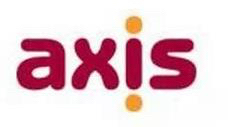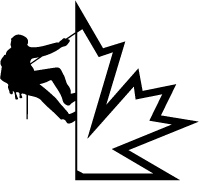Information
-
Person & Position of person carrying out the inspection
-
Site Address
-
Location of Scaffold i.e Front, Side or Rear of property
-
Conducted on
-
Client
-
Name of Company that have erected the scaffold
Design
-
Are there TG20 Compliance sheets or design drawings available?
-
Have the Scaffolds been built in accordance with the compliance sheets or design provided?
Footings
-
Is the scaffold erected on ground that is firm, even and free from debris?<br><br>Note: If no, what has been done to ensure the scaffold is adequately supported? <br>An engineer should be consulted to check the adequacy of sloping foundations if the gradient exceeds 1 vertices to 10 horizontal.
-
Have base plates been used?<br><br>Note: base plates should typically steel base and 150mm x 150mm
-
Are sole boards in place and at the correct dimensions? <br><br>Note: 450mm x 220mm
Standards
-
Are the standards vertical and within the allowed erection tolerance?<br><br>Note: tolerance of 20mm in every 2 meters of height to a maximum overall deviation of 50mm
-
Are the joints staggered?<br><br>Note: standards should be staggered so that adjacent standards are not joined within the same lift.
Ledgers
-
Are the Ledgers parallel and within the allowed erection tolerance?<br><br><br>Note: tolerance of 20mm in every 2 meters of height to a maximum overall deviation of 50mm
-
Are the joints staggered?<br><br>Note: joints in ledgers should be staggered so that adjacent standards are not joined within the same lift. However, the absence of a joint in the guard rail in the guard rail my be accepted giving sufficient continuity to the scaffold to permit joints in the same ledgers above and below it in the same bay.
-
Are the lift heights within the allowed erection tolerance?<br><br>Note: lift heights should be planned by considering the attended use of the scaffold. The TG20 compliance sheet will determine the lift height of a scaffold, typically this will be 2.7 meters on the first lift and 2 or 3 meters thereafter.
Transoms
-
Are the transoms of the correct length and do they protrude 25mm past the coupler?
-
Are the transoms spaced correctly on boarded and non boarded lifts?
-
Is there a transom fitted within 300mm of the node point at ledger braced standards?
The scaffold
-
Is the first boarded lift of the scaffold at a maximum height of 3 meters?
-
Does the scaffold have protection to stop falls at all openings? Such as gates or a pivoting rail
Ledger, Façade and Plan Bracing
-
Does the scaffold have a scaff tag on all access points, filled out correctly?
-
Is all bracing connected within 300mm of the node point?<br><br>Note: no bracing should be fitted to guard rails.
-
Is all bracing set at the correct intervals?<br><br>Note: Façade bracing is required on every lift, and every six bays. <br>Ledger bracing should be fitted to every third pair of standards.
-
Is all bracing connected using load bearing fittings?<br><br>Note: load bearing couplers will be manufactured to EN74 standard and marked to either Class A or B. Couplers manufactured to BS1139 are also acceptable.
Ties
-
Are all ties been set at the frequency of the compliance sheets or design drawing?<br><br>Note: Ties should be set and tested per the TG20:13 compliance sheet. All ties should be tied to the front and back standards, using load bearing couplers. Ideally ties will be fixed at ledger braced frame.
-
Have pull tests been carried out?
-
Where ties cannot be used is another system in place to retain the scaffold? <br><br>Note: rakers may be used up to the tie position on the second lift, on very light weight scaffolds. Rakers can not be used on any scaffolds taller than 6 metres. All rakers should be fitted with a restraint tube. Rakers should be fitted to the end standards and every other set of standards in between.
Boarded Lift
-
Are the boards in good condition with no excessive splits, or notches?<br><br>Note: all boards should be 38mm thick. No boards should show signs of ill treatment, warping, abuse or decay. All should contain a nail plate or end hoop. no slit should exceed 225mm in length. No cuts should be deeper than 2mm.
-
Are all boards on the scaffold tied down?<br><br>Note: including any unboarded lifts.
-
Is the working platform free from gaps and trip hazards?
-
Do all inside standards protrude 1mtr above the working platform?
-
Are all inside boards secured to prevent movement?
-
Are the boards supported by at least 50mm past their last support and not exceeding 150mm?
Handrails, Toe Boards & Brick Guards
-
Are Handrail and toe boards fitted where there is a risk of persons or materials falling?
-
Are the handrails at the correct height 950mm with a gap not exceeding 470mm between the toe board and the handrails?
-
Are the handrails and toe boards correctly fixed (toe boards over 2 standards) and are the joints not in the same bay as the ledgers below?<br><br>Note: toe boards should be fixed inside of standards with a putlog coupler or a variety of proprietary clips. Guard rails should be positioned inside of guard rails, and connected to each standard with a right angle coupler. The lower guard rail should be a maximum of 470mm above the toe board, with the top rail a minimum of 950 from above the decking.
-
Are internal guard rails required?<br><br>Note: internal guard rails are required if the internal gap exceeds 225mm
-
Are the brick guards in good condition and correctly secured?
Ladder/ stair access
-
Are the ladders on a firm and even base and supported only by the stiles?
-
Are the ladders correctly secured with either lashing or single fittings that wrap around the stiles?
-
Do the ladders protrude at least 1 meter above the working platform? where this is not possible is there an adequate handhold provided?
-
Are the ladder / stair treads in sound condition and free from hazards that could cause harm?
-
are the stair treads fixed securely with no movement?<br>
-
Are all the Half landings complete with Handrails and toe boards?
Housekeeping
-
Are all the spare materials in a neat and tidy condition?
Sign Off
-
Please list any matters of issues arising from inspection
-
Details of any further action considered necessary
-
Can work be carried out safely?
-
Who has been informed?
-
Name of person receiving report
-
Signature of person completing the report










